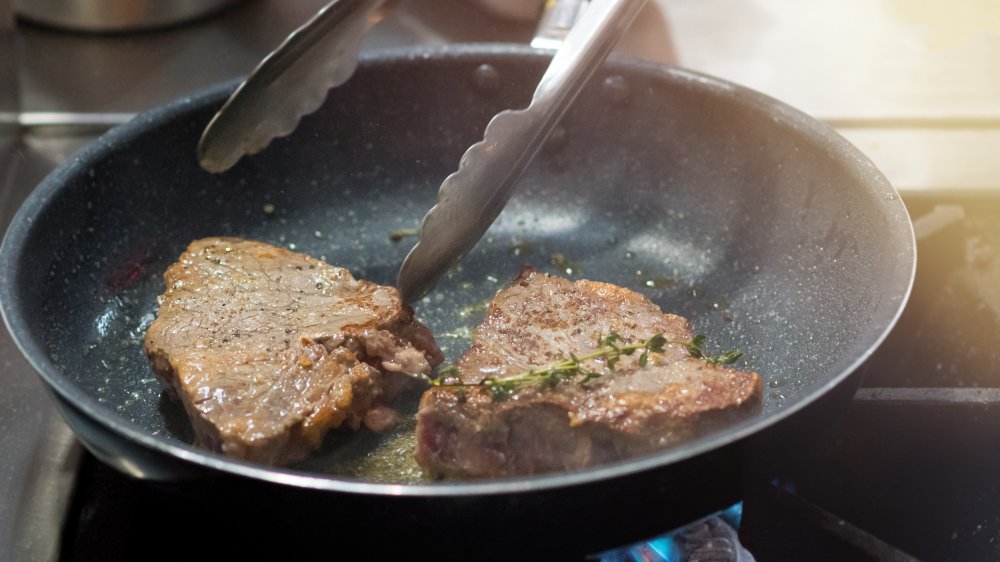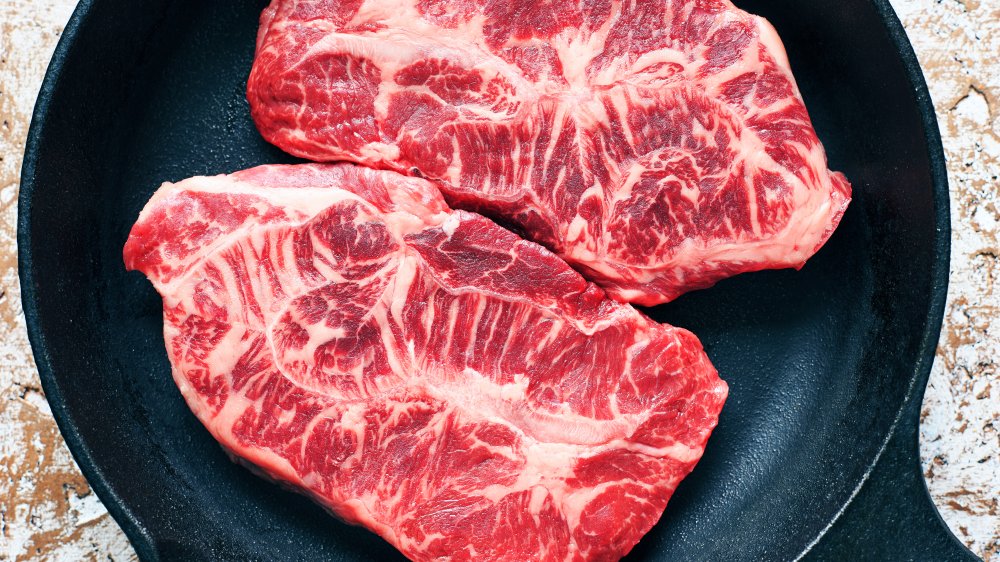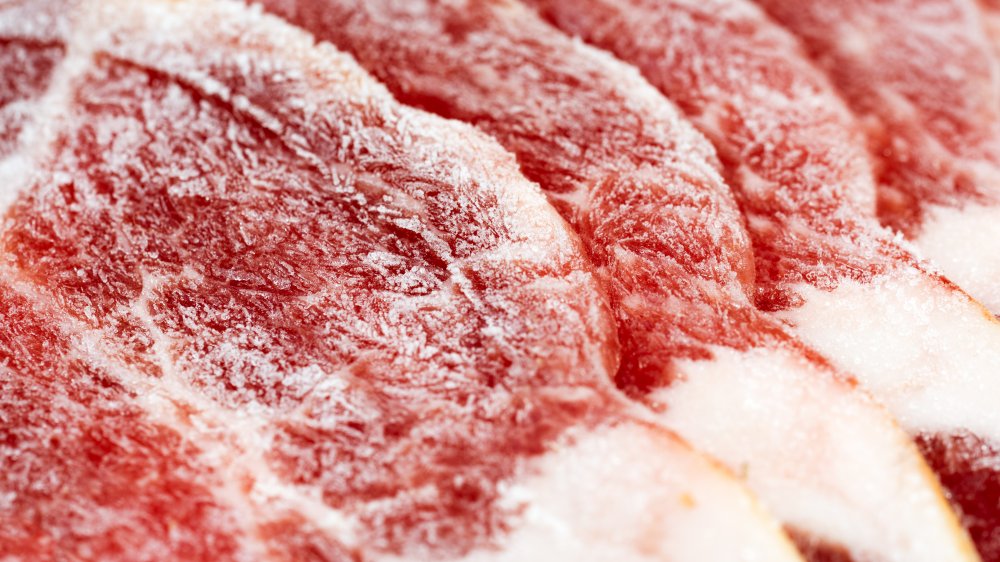Why You Should Stop Thawing Frozen Steaks Before Cooking
Ever decided that what you're really craving for dinner (or breakfast, we won't judge) is a nice, juicy steak? You could always hit up your local steakhouse, sure, but maybe it's a week from payday and you're not feeling like a big spender. Lucky you, you just remembered that the grocery store recently had a sale on sirloin and you stocked up last time you went shopping. But oh, darn it, how long is it going to take to thaw that steak before you can throw it in the pan? And do you absolutely have to thaw it in the refrigerator, or can you maybe just this once try thawing on the countertop without courting a nasty case of food poisoning? And what's up with that microwave "thaw" button anyway? Is there any way to make sure that the microwave will actually just thaw your meat without starting to cook it? Whoa, too many questions. Too much confusion. Might as well just throw the steak back in the freezer and nuke another Lean Cuisine.
But wait, we bring you tidings of great joy! According to Cook's Illustrated, the optimal thawing time for a frozen steak is exactly 0 minutes and 0 seconds. Yes, fellow lazy cooks, you read that right — frozen steaks actually cook up juicier than the ones you've taken the time to thaw overnight in your fridge. Here's how to do it.
The no-thaw frozen steak technique
Cook's Illustrated explains that the reason cooked-from-frozen steak fares better than thawed steak is because the colder temperature prevents overcooking while still allowing for delicious browning. They recommend that you sear your frozen steak in a hot, ovenproof skillet for 90 seconds per side. The skillet should be pretty large, as a frozen steak will splatter more than one that's been thawed, and in order to ensure even browning, you should also fill the skillet 1/8-inch deep with vegetable oil before heating it up. Prior to searing the steaks, preheat the oven to 275 degrees. Once the steaks are seared, transfer the skillet to the oven and finish cooking them for about 18 to 22 minutes. Test them to see if they're done with a meat thermometer — the thermometer should read at least 125 degrees for a steak that's cooked to medium-rare.
ButcherBox's Chef Yankel explained to Real Simple his slightly different method of preparing steaks straight from the freezer. He places the frozen steak (still in their packaging) in a bowl and runs cold water over it. While he's doing this, he preheats his oven to 400 degrees. He also sears his steaks in an oil-filled pan, but cooks them for three minutes on one side only. He then flips the steaks over and transfers them to the oven, where they finish cooking for 15 minutes. Once the steaks have reached the desired temperature, he lets them rest for five to eight minutes before slicing them against the grain.
You can skip thawing other frozen meats, too
The no-thaw meat technique also works for pork and chicken. For both types of meat, and cuts of beef thicker than steak, Chef Yankel recommends you cook them at least twice as long as you would cook the same cut of meat were it thawed. You should, however, set the oven at a slightly lower temperature, as long as it above 350 degrees for safety's sake.
What is not recommended, however, is cooking frozen meat in your Instant Pot or other slow cooker. The USDA refers to temperatures between 40 degrees and 140 degrees as the "danger zone" (cue Kenny Loggins' theme song from Top Gun). They warn that if you try to slow-cook frozen meat, it will spend too much time in this unhealthy zone, which can allow bacteria to grow. As the "danger" of which the USDA speaks involves serious gastrointestinal distress rather than daring feats of cinematic aviation, it's always better to make sure you're cooking your meat in the safety zone.
One more tip: Should you not be able to finish your delicious, juicy steak dinner, there is a super-easy way to reheat the leftovers using a simplified version of the sous-vide technique. All you need to do is drop your leftover steak into a zip-top bag and immerse it in 130 degree water for about five minutes. Believe it or not, steak reheated in this method tastes very nearly as good as it did the first time around. With these two easy hacks for enjoying a perfect steak at home, you may never need to visit that high-dollar steakhouse again.


